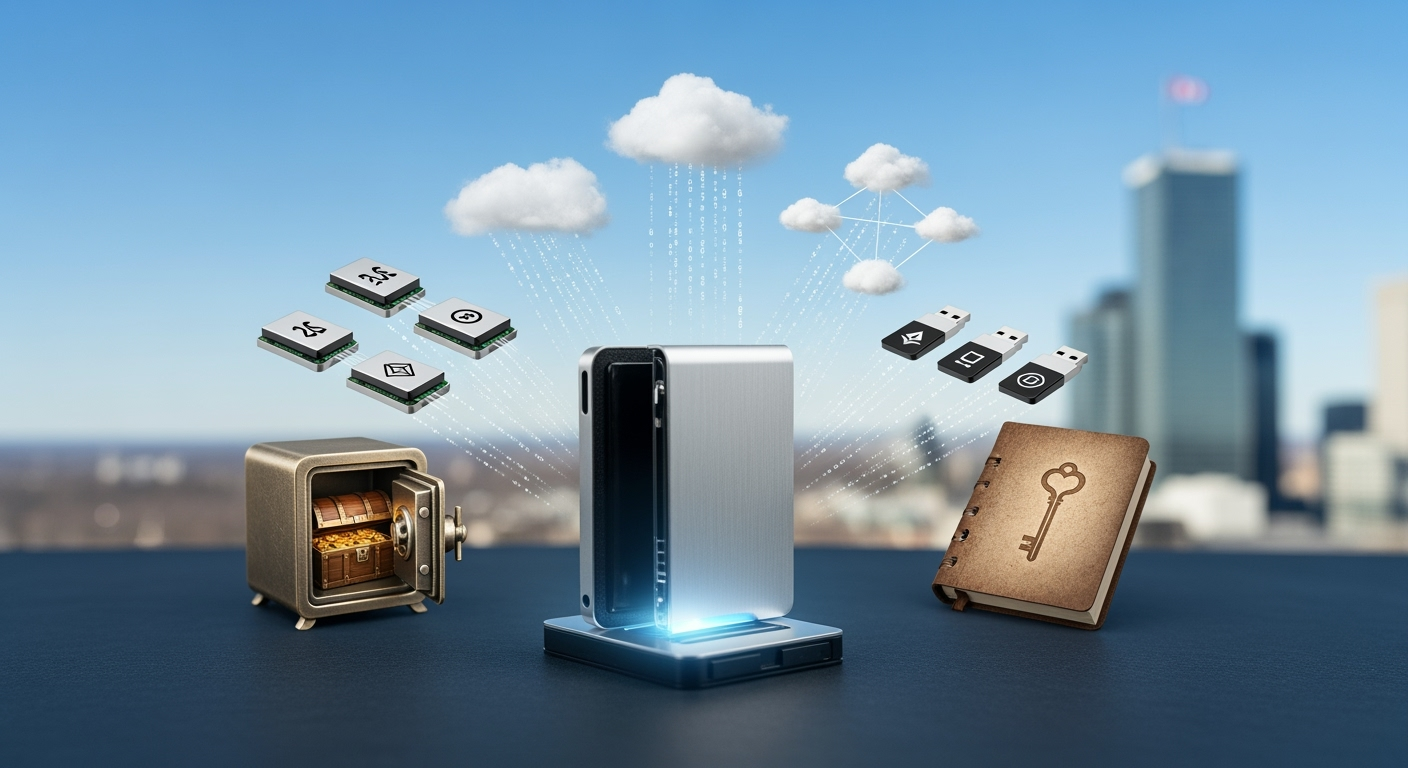Beyond the Cold Wallet: Layered Backup Strategies for Safeguarding Bitcoin in Canada
Bitcoin owners in Canada—and worldwide—often think of safety as a single cold‑wallet solution. In reality, a true security posture applies multiple, complementary layers that protect against physical loss, electronic theft, natural disasters, and human error. By combining offline backups, redundancy, and out‑of‑the‑box recovery tools, you can create a safety net that lets you recover your coins in any scenario. This guide walks through the practical steps to build a robust, layered backup strategy tailored to Canadian regulations and market practices.
1. Understand the Threat Landscape
Bitcoin’s immutable ledger means that a lost private key is permanent loss. In Canada, the risks range from:
- Hardware failure or accidental damage
- Physical theft or loss of a device (e.g., laptop, smartphone)
- Natural disasters (flood, fire, earthquake)
- Malware or phishing that compromises seed phrases
- Social engineering and coworker or partner compromise
Each threat compels a distinct backup response. The strategy outlined below layers responses to cover as many of these scenarios as possible.
2. Layer One – The Core Cold Storage
Hardware Wallets (Ledger, Trezor, Coldcard)
The first line of defense is a secure offline device that stores the seed on a tamper‑resistant chip. A hardware wallet is immune to most online attacks because key generation and signing happen inside the device. For Canadians, it is recommended to store the hardware in a dry, temperature‑controlled room away from direct sunlight.
Paper Wallets – The “Air‑Gap” Backup
Printing a paper wallet is the most non‑digital backup. Use a dedicated, offline computer to generate and print the wallet, then fold and laminate it. Store the paper in a fire‑proof, waterproof safe that is not connected to any online network.
Multiple Physical Copies
Maintain at least two independent copies of the seed—one in Canada and another in a trusted friend’s home or a secure third‑party custodian outside the country. “Different physical locations” are a core principle used by institutional custodians and adoptable by individual users.
3. Layer Two – Redundant Digital Storage
Encrypted USB Drives (Hardware‑Encrypted Drives)
Devices such as Samsung Secure SSD or CipherDrive encrypt data at the hardware level. The seed placed on the device should still be encrypted with a strong pass‑phrase, and the pass‑phrase should be stored separately from the device—ideally in a vault or YubiKey HSM.
Secure Cloud Encryption
Some users use a private cloud encrypted folder (e.g., via ProtonDrive or Tresorit). The key is that the encryption is end‑to‑end; the cloud provider never has access to the raw seed. Synchronize the encrypted files between two accounts—one in Canada and one in another country—to add geographic redundancy.
Key‑Recovery Services (Multisig and BLS)
Implement a 2‑of‑3 multisig for the recovery phrase. Split the key: one share on a hardware wallet, a second share on paper, and a third share in a custodial vault like Bitbuy’s “vault service” or a trusted Belgian bank. The BLS (Boneh–Lynn–Shacham) scheme allows signatures from the assembled shares without revealing the underlying secrets.
4. Layer Three – Insurance and Liability Management
While Canada does not have a standard “Bitcoin insurance” program, individual firms and institutional platforms offer limited coverage. Research Payment Error Insurance, third‑party gold‑standard cover, and peer‑to‑peer risk‑sharing agreements. Keep a digital ledger of all insurance contracts, policies, and contact details in the same encrypted vault used for the recovery phrase.
5. Layer Four – Secure Deletion and Legacy Planning
Secure Deletion of Digital Copies
When you no longer need a digital copy, use a tool such as “shred” on Linux or “sdelete” on Windows to overwrite the storage medium multiple times. This prevents data recovery by forensic experts.
Estate Planning and Digital Will
To avoid a “lost in the afterlife” scenario, include the recovery data in a digital estate plan. Use a “crypto‑friendly” executor (often a trusted family member or lawyer with experience in blockchain) and provide a schedule for updating the will annually.
6. Recovery Workflow – What to Do When The Key Is Lost
- Confirm loss: attempt to sign a test transaction from the hardware device.
- Locate the nearest seed copy: use the 2‑of‑3 share system.
- Assemble the shares: a multisig prompt will guide you.
- Restore to a new hardware wallet or on‑chain multisig address.
- Transfer the balance to a fresh, securely backed up address.
For Canadian users, you can also file a forensic report under FINTRAC guidelines if the loss is due to theft or fraud. Maintaining a recovery log helps with any potential regulatory disclosure.
7. Practical Checklist – The 7‑Step Roll‑Out
- Generate the seed on an air‑gapped computer.
- Print the paper wallet and laminate.
- Store in a fire‑proof safe, separate from the hardware wallet.
- Encrypt the seed onto a hardware SSD; lock the key in a YubiKey.
- Upload the encrypted SSD to a second secure cloud account.
- Set up a 2‑of‑3 multisig, store one share in a custodial vault.
- Create a digital estate plan and secure the legal documentation.
Conclusion
Safety in the crypto world is not a single act but a continuous process. By building a layered backup strategy that combines offline cold‑storage, encrypted digital redundancy, insurance coverage, and a clear recovery plan, Canadian Bitcoin users can mitigate almost every known threat. Regular review—at least annually—ensures that physical locations, encryption methods, and legal documentation stay up‑to‑date with evolving technology and regulatory landscapes.
"A well‑structured backup is the only guarantee against the irrevocability of a lost key. Treat it as a living asset that needs regular maintenance, just like your Bitcoin portfolio." – Crypto‑Security Analyst
